Power Dissipated By Resistor: How To Blow Up A Circuit
How to blow up a resistor by passing too much current

What is the power rating of a resistor all about? Well, when you pass a current through a resistor some of the electrical energy is converted and dissipated as heat by the component. The power rating tells us exactly how much power that the resistor can safely dissipate when installed in a circuit. To demonstrate this I've blown up a resistor and recorded the experiment for you. If you want to try this for yourself then you will need a couple of multimenters. I used one digital and one analog meter but you can use two of the same if you want to. Here are some suggestions:
Reasonably priced digital multimeter All resistors have two values. Not only do they have a resistance value measured in Ohms (Ω) but they also have a power rating measured in Watts. The resistance value is of course the reason why the part is a useful component in a circuit. Most circuits require several resistors with carefully selected resistance values in order for the circuit to perform as required.

Power dissipation formula If you exceed the power rating of a resistor then it can get hot. If you increase the current then the power dissipated will increase. The resistor will get hotter and even burst into flames before it finally fails. I did an experiment to demonstrate what happens when you overload a resistor. First of all I have to design the circuit that I'm going to use to demonstrate power dissipation in a resistor. My objective is to overload a single resistor in a circuit so much that it burns up.
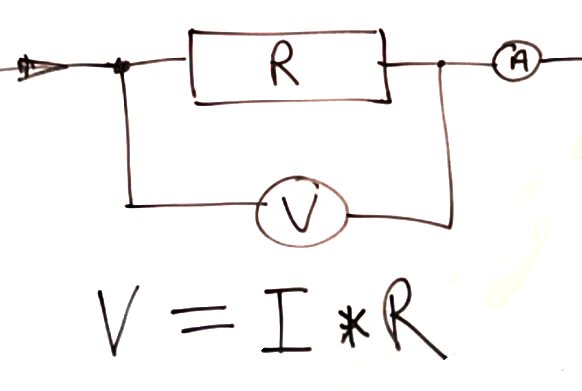
Ohms Law is used every day I have selected a resistor with a quarter Watt or 250mW power rating. When designing practical circuits this is a rating that should not be exceeded but I'm not interested in a practical circuit here. So how did I come up with the value of resistance, voltage and current that I used for the experiment? Well there was a lot of educated guesswork going on when I picked a resistor with a relatively low resistance out of my box. Same goes for the battery pack that I just happened to have handy. Once the resistance and voltage had been selected the current flows naturaly.
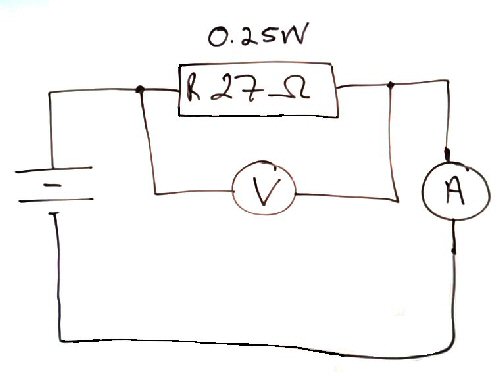
Lets start with the voltage because it's the one thing that I couldn't change easily without resorting to a variable bench supply. I try to avoid using those these days because batteries are easier to work with. I only use a mains powered supply for development purposes where the circuits are particularly demanding. The battery pack I initialy used contained 8 AA size rechargeable Nickel Metal Hydride (NiMH) cells. Each cell delivers 1.2 volts making 9.6V. My battery pack wasn't fully charged so I expected something around 9V. Starting with the maximum 250mW power rating of my resistor I calculated the current that would be required to max out the resistor. That was simple, I just had to divide the power by the voltage: I = 0.25 / 9.6 = 0.026 A (26mA) Using Ohms law rearranged a little I calculated the resistance that would safely bear the load by dividing the voltage by the current: R = 9.6 / 0.026 = 369Ω So if this was a practical circuit design using a 9.6V power source then you could safely use a resistor as low in resistance as 369Ω without overloading it. But like I said, I'm not interested in designing within the safety parameters here. I want to destroy the resistor. To make life a little easier when calculating power we can combine the two formulae above to give us two more very useful formulae:
V = I * R It's fairly obvious from the above that the lower the resistance the more power that is going to develop. If it isn't obvious then just take my word for it for now. I reached into my scrap box and found a 27Ω resistor. Lets see if we can predict the power it will have to dissipate. I will use the formula that only requires the voltage and the resistance:
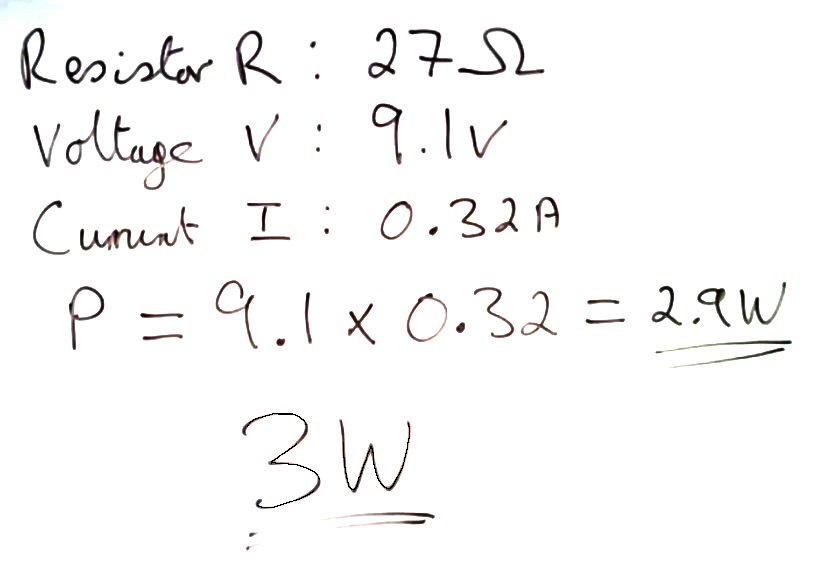
P = V2 / R Perfect I thought. That's 13 times the maximum power rating of 0.25W. Surely there will be fireworks. Lets give it a try. By measuring the actual voltage and current the power developed was a little under 3W. Not quite as high as predicted but still 12 times more than the resistor should stand.
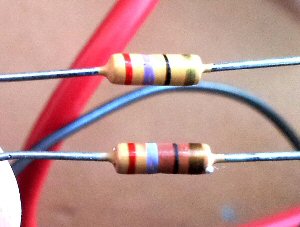
Before and after Well as you can see in the video there was smoke and the paint discolored a little but there were no flames or molten metal or anything very exciting at all. The resistor even worked perfectly well afterwards. I was surprised. I was certain that a 12 times overload would explode the little thing but no, it held up pretty well considering. I put the lack of flames down to the fact that I did the experiment in mid air with plenty of cooling ventilation. The results would no doubt have been very different had the resistor been mounted on a PCB tightly packed in with other components so don't try this at home.
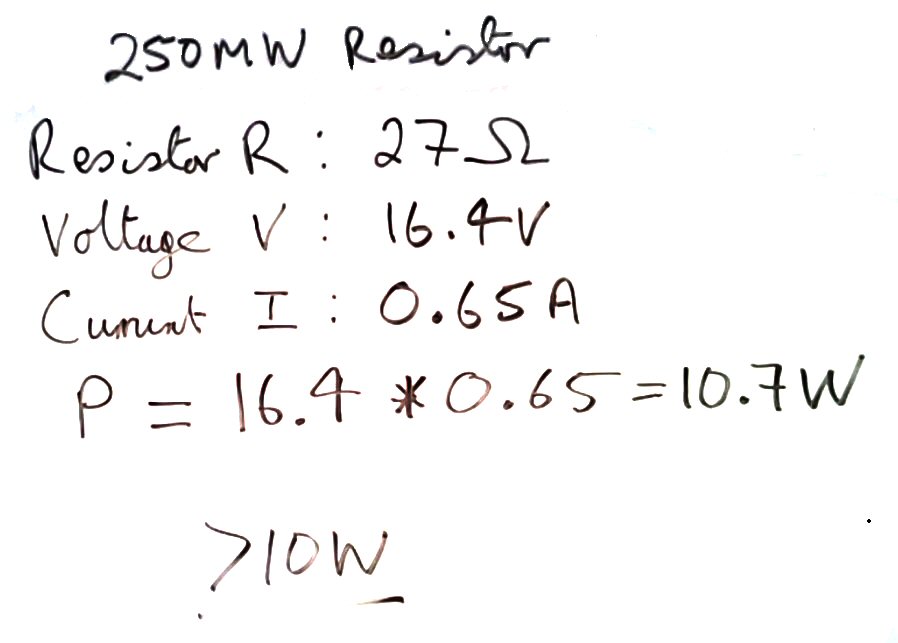
I wasn't going to be defeated. I wanted to destroy this resistor and that's what I was going to do so I found another battery pack. This one had 6 rechargable cells and I put it in series with the first one. Quickly adding it up in my head I guessed that it would bring the voltage up to about 16V. This was much better I thought.

Before and after massive overload Wow take a look at the video and watch it go. By adding the second battery pack I almost doubled the voltage and the current which meant that the poor resistor had to cope with 10W - a 40 times overload. I'm pleased to say that it didn't cope with it at all. There was lots of smoke and a red hot glow before the resistor finally failed by going open circuit. Yes! Success! So that's why it's important to consider the maximum power rating of the components that you use in your designs and builds. If the circuit calls for a 1W resistor then you should always use a 1W resistor in that position. If you are the designer then you should take care to minimize the power dissipation and make sure that you use appropriately sized components. Otherwise you might just end up with a useless charred molten mess. I know because it's happened to me more than once. |
| Now subscribe to our newsletter and don't miss a thing |
|
|





Comments
No comments yet.Add Comment